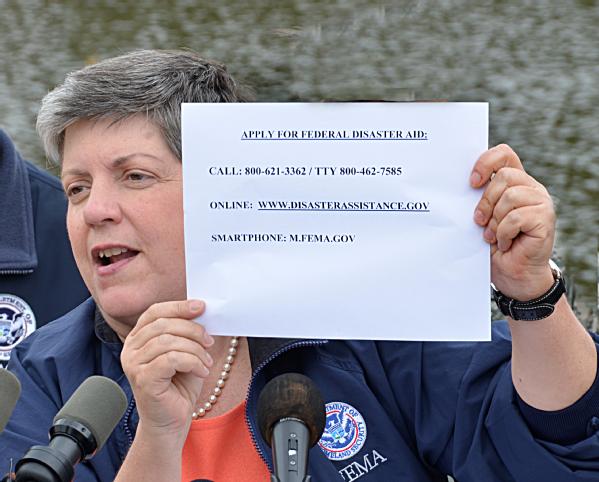Posted by FEMA Public Affairs
Editor's Note: As of 4 p.m. EDT, the storm system has further organized and intensified into tropical storm Don, with the current forecast track projecting landfall in southern Texas. The National Hurricane Center website has the latest information, and we will continue to provide updates on this blog about our role.
A wave of tropical thunderstorms is currently developing near the Yucatan Channel, between the coasts of Cuba and Mexico. According to the National Hurricane Center, this system is continuing to become better organized and if current trends continue, could become a tropical depression in the next 48 hours. We’re closely monitoring the situation through our regional offices in Denton, Texas and Atlanta, Ga., while coordinating with our partners at the National Hurricane Center forecast offices.
Here's the latest forecast from the National Hurricane Center:

Although it is too soon to know how quickly this storm could develop and what its potential impact may be on the U.S., current forecast models do show that the storm could impact parts of Mexico and southern Texas. Since before the start of hurricane season, we’ve been encouraging residents in hurricane-prone areas to get prepared, whether you live on the coast or further inland. History has taught us that storm tracks can change quickly and unexpectedly – and it’s critical that all members of the public areas get prepared.
If you haven't already, now is a good time to visit http://www.ready.gov/ and learn a few simple steps every family should take to get prepared before disaster strikes. And remember when it comes to hurricanes and tropical storms, listen to the direction of local officials. Be sure to know your evacuation route in case evacuation orders are given.
You can also visit http://www.hurricanes.gov/ or http://hurricanes.gov/mobile on your phone for the latest forecasts for severe tropical weather. If you’re on Twitter and Facebook, you can follow the latest updates from the National Hurricane Center for the Atlantic basin at twitter.com/NHC_Atlantic and www.facebook.com/US.NOAA.NationalHurricaneCenter.gov.
A wave of tropical thunderstorms is currently developing near the Yucatan Channel, between the coasts of Cuba and Mexico. According to the National Hurricane Center, this system is continuing to become better organized and if current trends continue, could become a tropical depression in the next 48 hours. We’re closely monitoring the situation through our regional offices in Denton, Texas and Atlanta, Ga., while coordinating with our partners at the National Hurricane Center forecast offices.
Here's the latest forecast from the National Hurricane Center:

Although it is too soon to know how quickly this storm could develop and what its potential impact may be on the U.S., current forecast models do show that the storm could impact parts of Mexico and southern Texas. Since before the start of hurricane season, we’ve been encouraging residents in hurricane-prone areas to get prepared, whether you live on the coast or further inland. History has taught us that storm tracks can change quickly and unexpectedly – and it’s critical that all members of the public areas get prepared.
If you haven't already, now is a good time to visit http://www.ready.gov/ and learn a few simple steps every family should take to get prepared before disaster strikes. And remember when it comes to hurricanes and tropical storms, listen to the direction of local officials. Be sure to know your evacuation route in case evacuation orders are given.
You can also visit http://www.hurricanes.gov/ or http://hurricanes.gov/mobile on your phone for the latest forecasts for severe tropical weather. If you’re on Twitter and Facebook, you can follow the latest updates from the National Hurricane Center for the Atlantic basin at twitter.com/NHC_Atlantic and www.facebook.com/US.NOAA.NationalHurricaneCenter.gov.


















